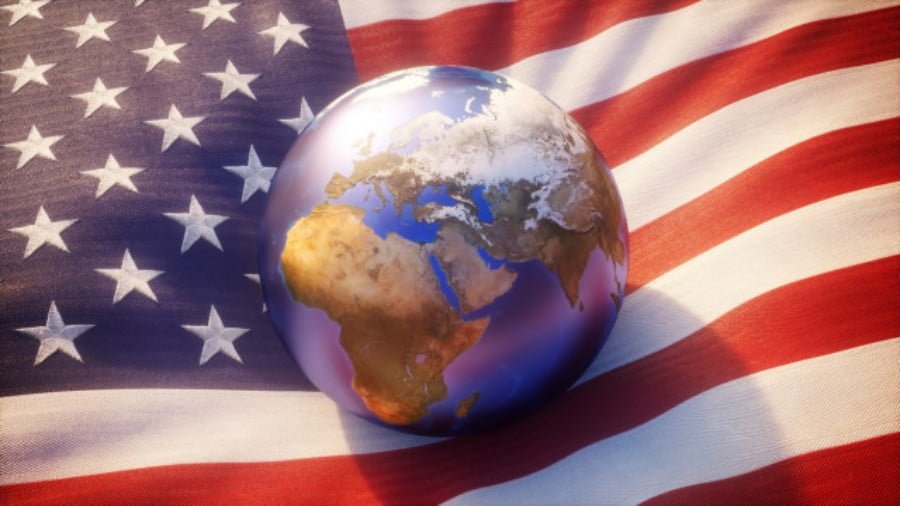US Is Playing Both India & Pakistan, In More Ways Than One
As India and Pakistan iron out a few significant differences after a near brush with each other’s militaries, the US has been quietly enacting a trade war strategy against India, a key ally of Washington.
The India-Pakistan conflict has revealed an incredibly ugly side of the Middle East’s regional geopolitics. What I mean is, if you thought it was ugly before, it just got a whole lot uglier.
For example, it now transpires that Israel has had a specific stake in the India-Pakistan conflict, as Israeli-made bombs dropped on Pakistani villages during the recent bombardment. Apparently, Israel is a key weapons supplier to the Indian army, supplying a billion dollars of arms each year. If it weren’t for veteran journalist Robert Fisk, the Israel-India deal would most likely have been kept in the dark from the mainstream eye for some time to come.
Like most volcanic eruptions in the Middle East, the US has also adopted a schizophrenic approach that can only be explained if you combine the insanity of the Trump administration and the geostrategic chess game that lunatic neocons have mapped out for US foreign policy strategy for decades.
“The U.S. condemns yesterday’s horrific terror attack on Indian security forces,” US Secretary of State Mike Pompeo wrote on Twitter at the time. “My thoughts and prayers are with the victims and their families. We stand with #India as it confronts terrorism. Pakistan must not provide safe haven for terrorists to threaten international security.”
Okay, so the US is sticking with India and pushing back on Pakistan? Hardly surprising, given the US had already completely turned its back on Pakistan in a bid to ensure it ceases being so cozy with China and Iran.
And yet, at the same time, the US had begun quietly pressuring India to kowtow to its interests as well. Just last week, the Trump administration notified Congress that it intended to scrap trade concessions for India, previously the largest beneficiary of the Generalized System of Preferences (GSP) that impacts over $5.6 billion worth of trade for India. The GSP was established in the 1970s to encourage economic growth in some of the world’s 121 developing nations.
It also bears mentioning that in tandem with its attack on India, the US has also included Turkey on its recent tariff-hit list, stating that Turkey had outgrown the GSP’s incentives.
While this is still not likely to be a major blow on its own, the timing is peculiar.
Firstly, India’s national elections are currently on the table, even as I type. Secondly, nuclear-armed India was about to go to war with nuclear-armed Pakistan, and the timing of the Trump administration’s move is clearly intended to send a very hard-hitting message about what New Delhi needs to do if its leadership are to survive the next few years. Third, US Secretary of Commerce Wilbur Ross was supposed to visit India for talks this week and ended up canceling his trip for some of the most bogus reasons ever provided, even in the age of Donald Trump.
India may be a stalwart ally of the United States, but it still needs to be kept in line. In some regards, India doesn’t play by the rules. One such example is that while it views China as its ultimate regional rival, it does appear to want to find some common ground and has begun strengthening ties in areas which are viable. In the process, India has also appeared to assist Iran in bypassing US sanctions as well.
As Bloomberg explains, this current push against India follows Washington’s attempts to pressure New Delhi on its Iranian oil imports, as well as its ties to Venezuela, a nation which has recently become public enemy number one. As a result, India had no choice but to increase its oil, natural gas and coal imports from the United States.
The official line goes something quite different, however. According to the Trump administration, the justifications for the move against India were that India has failed to provide the US with enough access to its markets. An official US Trade Representative’s Office statement said that: “India has implemented a wide array of trade barriers that create serious negative effects on United States commerce.”
In reality, the US has been planning this since approximately a year ago. In Donald Trump’s assessment of the situation, India has been taking the United States for a free ride as it has been enjoying zero tariffs on $5.6 billion worth of exports. US government data suggests that in 2017, India was the largest beneficiary of the GSP.
“Despite intensive engagement, India has failed to take the necessary steps to meet the GSP criterion,” Trump’s statement added.
Furthermore, over the past year, India’s leadership has raised import tariffs on US goods in order to support its own domestic manufacturing, which in turn hit some of America’s biggest companies including Amazon, Walmart, Apple, and Ford.
If we are being honest about it, this seems to be another case where an aggressive US strategy towards an ally is likely to backfire quite dramatically. If the Indian government is seen by its domestic population as crumbling to pressure exerted by Washington, this is likely to create and reignite an anti-American sentiment within the country. So, at the end of the day, what exactly is the US trying to achieve? Even if the Indian government bows down completely to American interests, it risks losing its popularity within its own domestic population, which at the end of the day is more important to its own survival than the backing of the US president.
In June last year, the Trump administration already decided to hit India where it hurts with 25 percent tariffs on steel and 10 percent levies on aluminum. At the time, India threatened it would respond in kind, and the relationship seemed set to deteriorate even further.
As most countries are forced to, however, India has in turn submitted a more balanced and nuanced approach. According to a top trade official, India would not react hastily and had no immediate plans to retaliate, saying what the US is doing does not warrant a “knee-jerk reaction.” In fact, Indian Commerce Secretary Anup Wadhawan alleged that the GSP only gave India a benefit of just $190 million per year, undermining the damage that Trump’s move will have done.
It’s laughable in some ways because, at the outset, India seemed to be one of the key beneficiaries that were to emerge out of the rubble of the US-China trade war. This may no longer be the case if the US continues down this pathway.
And just to give everyone a heads up, like most issues affecting the wider Asian region, expect to see multiple lies from the mainstream media about this topic. One such example is Donald Trump’s statement at the Conservative Political Action Conference (CPAC) where he announced that “When we send a motorcycle to India they charge 100 percent tariff…When India sends a motorcycle to us, we charge nothing.”
According to the Washington Post, this statement is true. According to facts and logic, it is untrue, as Indian President Narendra Modi already lowered tariffs on US motorcycles from 75 percent to 50 percent in 2018. Harley-Davidson, for one, only pays tariffs for a fraction of their bikes.
Supposedly, there is still a window of opportunity for the US president to reverse his decision. But even if he was to do so, in my estimation, the damage has already been done when it became clear that at any time (in fact, at a very crucial time for India prior to its elections), it can feel the wrath and fury of the Trump administration over trade practices that seem to make little sense to anyone with a basic sense of economics.
So what? – some of you may ask – the Trump administration is just being the Trump administration, pretending that putting America first means treating everyone as an untrustworthy adversary. Well, on the one hand, the US appears to be making an unnecessary enemy out of India with regard to trade. On the other hand, while India’s Israeli-made bombs rained down in Pakistan, it turns out that Pakistan has been relying on US-made and supplied bombs, including its use of the US-supplied F-16s which are equipped with advanced medium range air-to-air missiles against the Indian air force.
Sooner or later, allies and adversaries will probably end up finding it much easier to work together and bypass the aggressive strategy of the Trump administration, which seeks to dictate how every country behaves regarding its own basic wants and needs.
By Darius Shahtahmasebi
Source: RT







